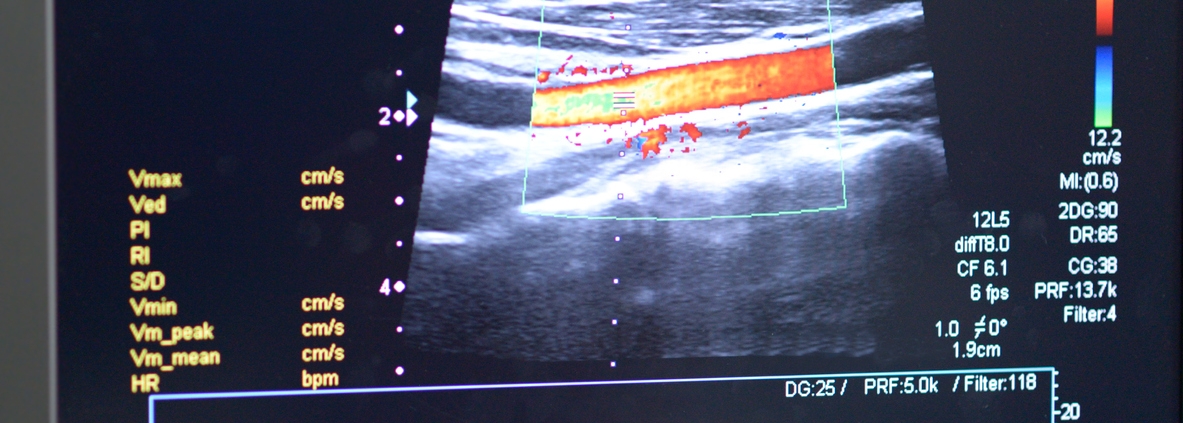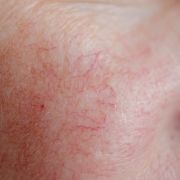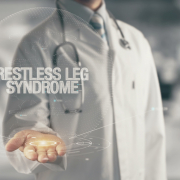What Can a Vascular Ultrasound Detect?
A vascular ultrasound is a safe and noninvasive procedure used to examine blood circulation around the body. Its main purpose is to evaluate blood flow to specific organs and tissues in your body, and to detect and locate any blockages or abnormalities within the blood vessels.
Vascular ultrasound uses sound waves to create images of blood vessels within the body’s circulatory system. During a vascular ultrasound, sound waves reflect off of blood cells moving within blood vessels, thereby allowing the physician to accurately evaluate their movement and speed, as well as assess the condition of the blood vessels.
Arteries are the blood vessels that carry oxygen-rich blood from the heart to the rest of the body, while the veins carry the oxygen-depleted blood back to the heart for reoxygenation. Together they comprise most of the vascular system, also called the circulatory system.
Why Do I Need a Vascular Ultrasound Scan?
Vascular ultrasound examinations may be performed to:
- Monitor the blood flow to specific organs and tissues
- Identify and locate any blockages, abnormalities, or narrowing of blood vessels (vascular stenosis)
- Measure the speed of blood flow
- Detect blood clots
- Determine whether a blood vessel is enlarged
- Assess varicose veins
- Establish whether angioplasty is necessary
- Evaluate the success of a surgical procedure
What Conditions Are Found by a Vascular Ultrasound?
Vascular ultrasound is performed to accurately diagnose and assess the severity of a number of vascular conditions, such as those caused by decreased blood flow or blocked blood vessels, which can lead to serious conditions such as heart attack or stroke.
Common vascular conditions include the following:
Chronic Venous Insufficiency (CVI)
Chronic venous insufficiency is when the veins continually have difficulty sending blood from the limbs back to the heart. If blood flow to the heart is restricted due to a blood clot or other malfunction, blood can back up and pool in the legs – resulting in chronic venous insufficiency. The most common cause of CVI is a disorder of the valves in the veins that fail to prevent blood from flowing backward (as in the legs when standing, due to gravity).
Peripheral Artery Disease (PAD)
Peripheral artery disease is a common circulation condition in which narrowed arteries prevent adequate amounts of oxygen-rich blood from reaching the body’s limbs. The narrowing is typically due to atherosclerosis, where fatty plaque builds up in the arteries. Symptoms such as painful muscle cramps are an indicator of insufficient blood flow to the area, which typically occurs in the legs.
Carotid Artery Disease (CAD)
Carotid artery disease is similar to PAD but affects the carotid arteries located on either side of the neck. Blood is supplied to the brain by the carotid arteries, and if they become narrowed or blocked by atherosclerosis, it can restrict blood flow to the head. In severe cases, CAD can lead to a stroke.
Deep Vein Thrombosis (DVT)
Deep vein thrombosis is a serious condition which occurs when a blood clot develops in a large, deep vein, often in the leg. It can be life-threatening if the blood clot breaks loose and lodges in the lungs, where it thereby causes a pulmonary embolism. This can cause shortness of breath and chest pain, and it can result in sudden death due to a lack of blood circulation.
Vascular Specialists in Kansas City
If you suspect that you have a circulation problem, talk to the vascular specialists at Missouri Vein Specialists. Circulation problems and blockages can lead to serious complications such as a heart attack, stroke, or pulmonary embolism if not detected and treated in time.
If you would like to schedule a consultation with Dr. Scott Darling, call our office today at (816) 792-3400 or use our convenient online appointment request form now. We look forward to being your healthcare partner!












